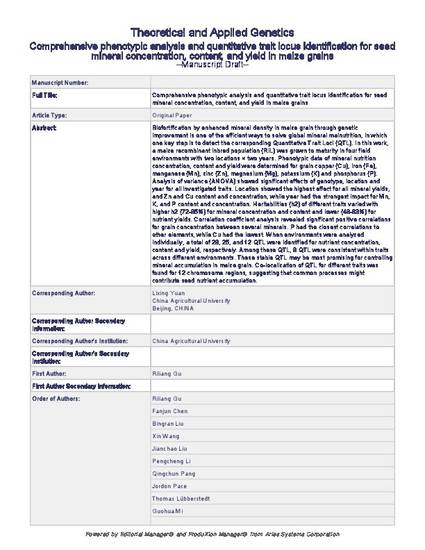
Biofortification by enhanced mineral density in maize grain through genetic improvement is one of the efficient ways to solve global mineral malnutrition, in which one key step is to detect the corresponding Quantitative Trait Loci (QTL). In this work, a maize recombinant inbred population (RIL) was grown to maturity in four field environments with two locations × two years. Phenotypic data of mineral nutrition concentration, content and yield were determined for grain copper (Cu), iron (Fe), manganese (Mn), zinc (Zn), magnesium (Mg), potassium (K) and phosphorus (P). Analysis of variance (ANOVA) showed significant effects of genotype, location and year for all investigated traits. Location showed the highest effect for all mineral yields, and Zn and Cu content and concentration, while year had the strongest impact for Mn, K, and P content and concentration. Heritabilities (h2) of different traits varied with higher h2 (72-85%) for mineral concentration and content and lower (48-63%) for nutrient yields. Correlation coefficient analysis revealed significant positive correlations for grain concentration between several minerals. P had the closest correlations to other elements, while Cu had the lowest. When environments were analyzed individually, a total of 28, 25, and 12 QTL were identified for nutrient concentration, content and yield, respectively. Among these QTL, 8 QTL were consistent within traits across different environments. These stable QTL may be most promising for controlling mineral accumulation in maize grain. Co-localization of QTL for different traits was found for 12 chromosome regions, suggesting that common processes might contribute seed nutrient accumulation
Available at: http://works.bepress.com/thomas-lubberstedt/69/

This is a post-peer-review, pre-copyedit version of an article published in Theoretical and Applied Genetics. The final authenticated version is available online at: https://doi.org/10.1007/s00122-015-2546-5.